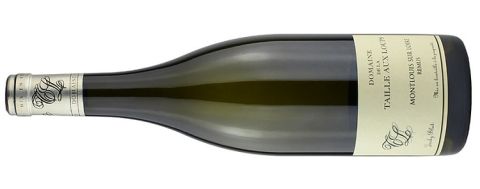From €20, $24.98, £20.68, CA$35.25, HK$460, 4,840 roubles
Jacky Blot (above, in situ) started off life in the wine trade as a courtier, before buying the 8-ha (20-acre) Domaine de la Taille aux Loups in Montlouis-sur-Loire in 1989. (He now has tripled that area, including vineyards in Vouvray and Bourgueil, where he makes Cabernet Franc that Jancis much admires.) He caused a few waves in the local community with his approach to viticulture and winemaking, which were considered back then to be more than a little outrageous.
Outrageous stuff such as organic viticulture, ploughing rather than using herbicides, not fertilising the vines, spontaneous fermentations and, most scurrilous of all, barrel fermentation and barrel ageing…
In 2010, he bought Clos de Mosny. This 12-ha (30-acre) walled vineyard is the largest monopole in the Loire, planted with old Chenin vines of various ages and various clones on clay and flint soils over chalk subsoil.
Rémus is made from a second, slightly later harvest through Clos de Mosny, from 50- to 80-year-old vines. Spontaneous fermentation takes place in barrels in his cool underground cellar (which has an ambient temperature of about 12 °C/54 °F) with absolutely no intervention, so fermentation is very slow, taking anything from four to nine months. The wine doesn’t undergo malolactic conversion (he believes that malic acid gives the wines a spine), there is no bâtonnage and no added sulphites during élevage. It then spends 12 months in new (about 10%), one-, two- and three-year-old barrels.
In early November, tasting a long line-up of Loire Chenins blind, I was instantly stunned by this wine from the moment I put my nose in the glass. My reaction was visceral. I wrote the very inarticulate tasting note, 'Bloody hell, this is good!' I couldn’t wait to get to the end of the line and find out what it was.
It was a wine that continued to entrance me over several days. Every time I went back to it there was something else waiting for me. It tasted of honey and nuts, pear and hay, sage and apple. It was almost paradoxical: buttery brioche and flaky-pastry richness, yet piercing acidity and tension; angular structure, yet bending and folding. It seemed to be translucent in some moments, opaque in others. One moment it offered up stillness and silence, the next it soared, orchestral, demanding.
If you need further convincing, Jancis described it as ‘Just perfect!’ and made it one of her 2020 festive recommendations.
On that topic, this would be my hands-down choice for Christmas Day. It's phenomenally food-loving. It has the combination of precise high acidity, intense ripe fruit and barrel-aged weight and savouriness to cut through richness, complement sweetness, light up savouriness, and enhance crispness. If you've planned a traditional menu, it's a gift of a wine.
For those not fizz inclined, it's racy enough to go with smoked salmon, especially if it is served with something like crème fraîche, cream cheese or a creamy, soft goat's cheese. It would be stunning with the delicate umami sweetness of an elegant crab-meat starter, buttery, caramelised scallops or prawns (just avoid anything garlicky), especially if you include the bitter crunch of radicchio or chicory leaves and walnuts. It's going to go with anything in pastry, absolutely anything – the flakier or more buttery the pastry is, the better the match will be. It's a wine that will waltz willingly with all the baked and roasted root veg you could throw at it, from butternut to parsnips, onions to honeyed carrots. It loves nuts. All nuts. Especially roasted. Make dukkah and sprinkle it over that roast beetroot and pumpkin salad. It loves cream. If you're starting with a creamy, truffle mushroom soup, this is your wine. It's a perfect turkey wine. It's a goose wine. And this wine loves all things porky. Bacon, glazed ham, chipolatas, sausage stuffing… In fact, you might want to get a few bottles to go with all the leftovers.
Miraculously, it’s relatively easy to find. In the UK, it’s cheapest at Lay & Wheeler at £20.68, but Haynes Hanson & Clark are also selling it at £24.20. In the US you can get it in New York State, California, Alabama. And it’s also available in Canada, Hong Kong and Russia. It’s worth noting that going back to the 2002 vintage, the reviews we have for this wine are consistently glowing. And it has a good 10-year life span. So if you can’t get hold of the 2018, it’s worth looking for older vintages. Justerini & Brooks has the 2017 for £21.67 per bottle. The 2017 is also available in the Netherlands, Spain, Switzerland, Italy, Hungary and Taiwan, as well as various other states in the USA.














